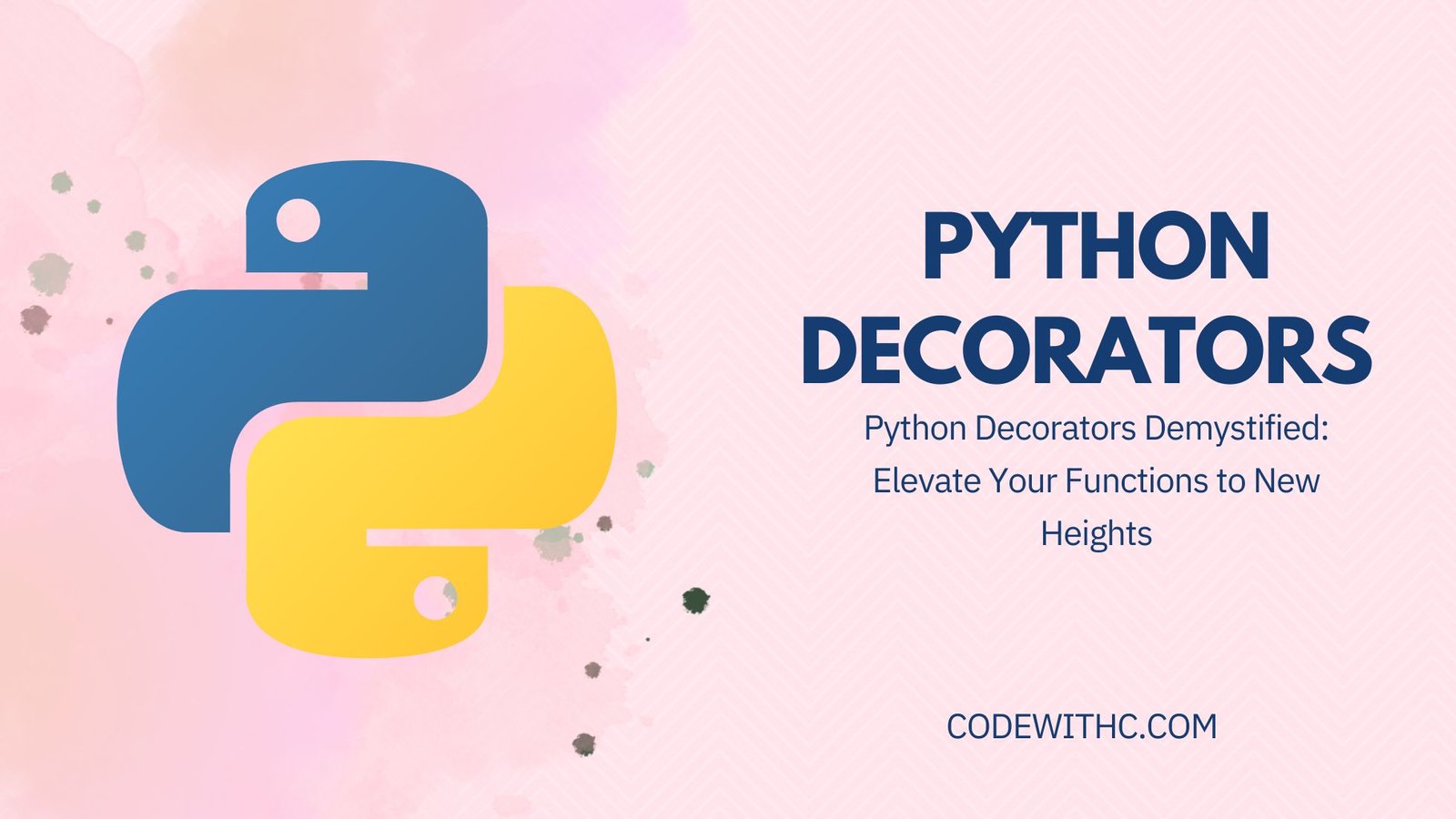Hello, fellow Python aficionados! ? Have you ever marveled at the elegance of Python’s “@” syntax and pondered its depths? Today, let’s journey into the heart of Python decorators, the powerful tool that lets you extend or modify the behavior of your functions in a clean and readable manner.
The Essence of Python Decorators
At their core, decorators in Python are higher-order functions, meaning they accept one or more functions as arguments and return a new function. Decorators provide a flexible way to adhere to the open/closed principle, a fundamental tenet in object-oriented programming that states software entities should be open for extension but closed for modification.
The Building Blocks of Decorators
To truly grasp decorators, one must understand that in Python, everything is an object, and this includes functions. This characteristic allows functions to be passed around, returned, and nested—forming the foundation for decorators.
def outer_function(msg):
def inner_function():
print(msg)
return inner_function
hi_func = outer_function('Hi')
bye_func = outer_function('Bye')
hi_func()
bye_func()
Code Explanation: In this example, outer_function returns the inner_function. When we call hi_func(), it retains the message ‘Hi’ passed earlier, showcasing the closure property in Python.
Expected Output:
Hi
Bye
Crafting Our First Decorator
Having set the stage, let’s create our first decorator. Imagine wanting to log the metadata about function execution – a common use case in application development.
def logger_decorator(func):
def wrapper(*args, **kwargs):
print(f"Running '{func.__name__}' with arguments {args} and keyword arguments {kwargs}")
result = func(*args, **kwargs)
print(f"'{func.__name__}' returned {result}")
return result
return wrapper
@logger_decorator
def add(x, y):
return x + y
add(5, 3)
Code Explanation: The logger_decorator wraps around the add function. When add is invoked, it logs details about the function execution.
Expected Output:
Running 'add' with arguments (5, 3) and keyword arguments {}
'add' returned 8
Advanced Decorators: Handling Arguments and State
Decorators can also accept arguments, and through closures, they can even maintain state between function calls. This capability allows us to craft more flexible and powerful decorators.
def repeat(num_times):
def decorator_repeat(func):
def wrapper(*args, **kwargs):
for _ in range(num_times):
result = func(*args, **kwargs)
return result
return wrapper
return decorator_repeat
@repeat(num_times=3)
def greet(name):
print(f"Hello {name}")
greet("Alice")
Code Explanation: The repeat decorator runs the greet function the specified number of times. It showcases how decorators can accept arguments and utilize nested functions to great effect.
Expected Output:
Hello Alice
Hello Alice
Hello Alice
Embracing the Power and Elegance of Decorators
Python decorators, with their ability to modify or extend the behavior of functions without altering their code, are a testament to Python’s commitment to readability and elegance. As you continue your Python journey, leveraging decorators can lead to cleaner, more maintainable, and more efficient code.
Dive deep, explore, and may your functions always be supercharged! ?







